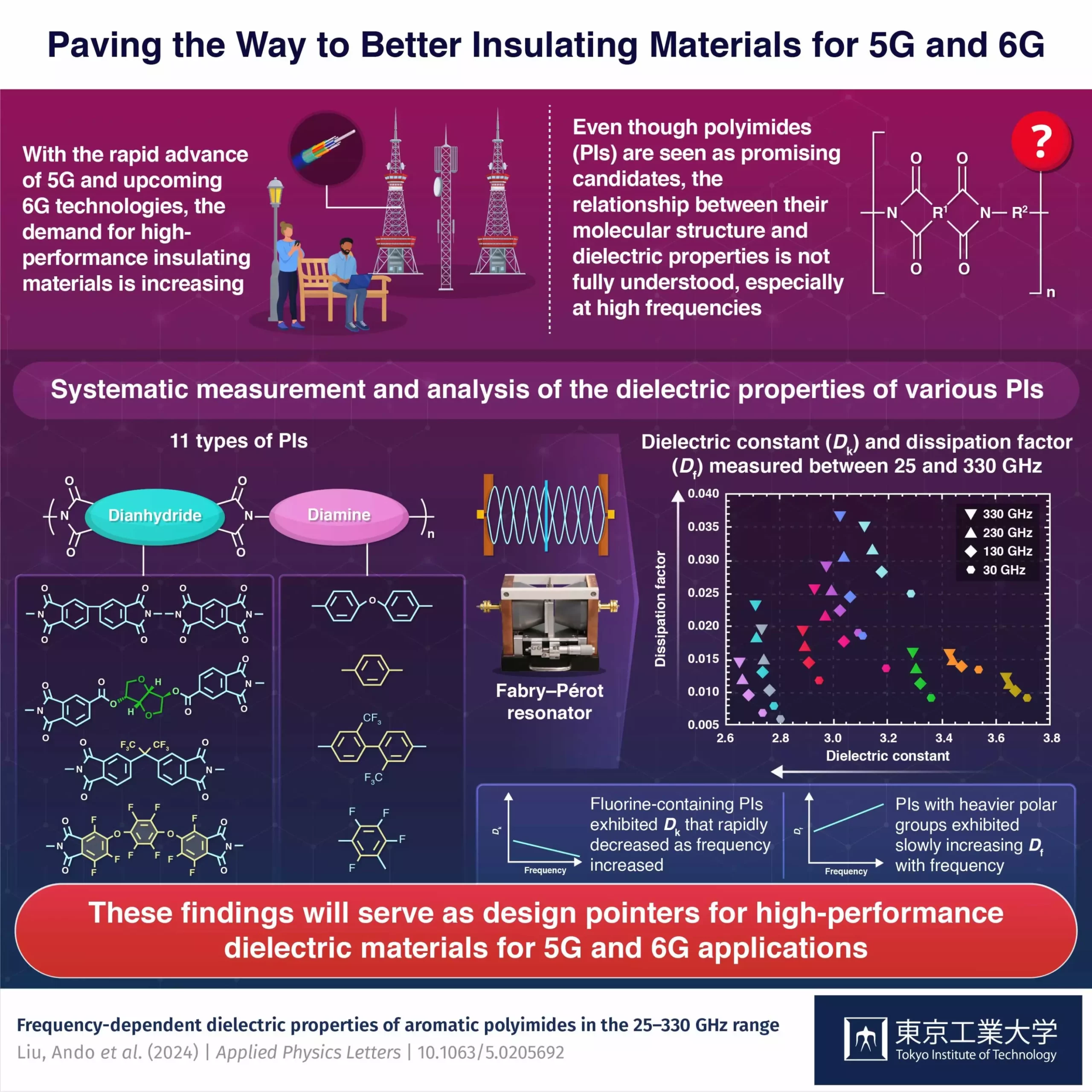As the world of technology continues to advance, the need for faster and more reliable wireless communications is becoming increasingly critical. With 5G already making waves, scientists and engineers are already looking towards the future with the development of 6G technologies. However, one of the major challenges that need to be addressed is the detrimental effects of operating at extremely high frequencies, such as signal attenuation and interference.
Polyimides: A Potential Solution
In a bid to find a solution to these challenges, a research team from the Tokyo Institute of Technology delved into the world of polyimides (PIs). These materials are gaining attention for their potential in high-frequency operations due to their excellent thermal stability, mechanical toughness, flexibility, lightweight, and favorable dielectric properties. Led by Professor Shinji Ando, the team conducted a study to explore the correlation between the molecular structure of PIs and their dielectric properties.
Research Findings
Using a Fabry–Pérot resonator, the researchers measured the dielectric properties of 11 different PIs with varying molecular structures. The results showed that PIs with higher fluorine content exhibited lower dielectric constants (Dk) and dissipation factors (Df), which are crucial for minimizing signal loss and maintaining signal integrity at high frequencies. Additionally, they found that the increase in Df was negatively correlated with the polar fraction of the polymer, providing valuable insights into the dielectric qualities of PIs.
These findings have significant implications for the development of 6G technologies. By understanding the dielectric properties of PIs, engineers may be able to create faster and more reliable telecommunication devices that can operate in the terahertz range. This could potentially pave the way for high-performance polymer-based insulating materials that are essential for the future of 6G technologies.
While the study sheds light on the potential of polymeric materials for 6G technologies, more research is needed to identify the best type of PIs for these purposes. Spectroscopic studies in the terahertz range may help further understand the origins of the dielectric responses of different structural PIs at high frequencies. With continued efforts and advancements in the field, the future of telecommunications looks promising with the development of polymeric materials for 6G technologies.
By critically analyzing the original article, we can see the potential benefits of polymeric materials in overcoming the challenges of high-frequency wireless communications. The research conducted by the Tokyo Institute of Technology provides valuable insights into the dielectric properties of PIs, paving the way for the development of faster and more reliable telecommunications technologies for the future.


Leave a Reply